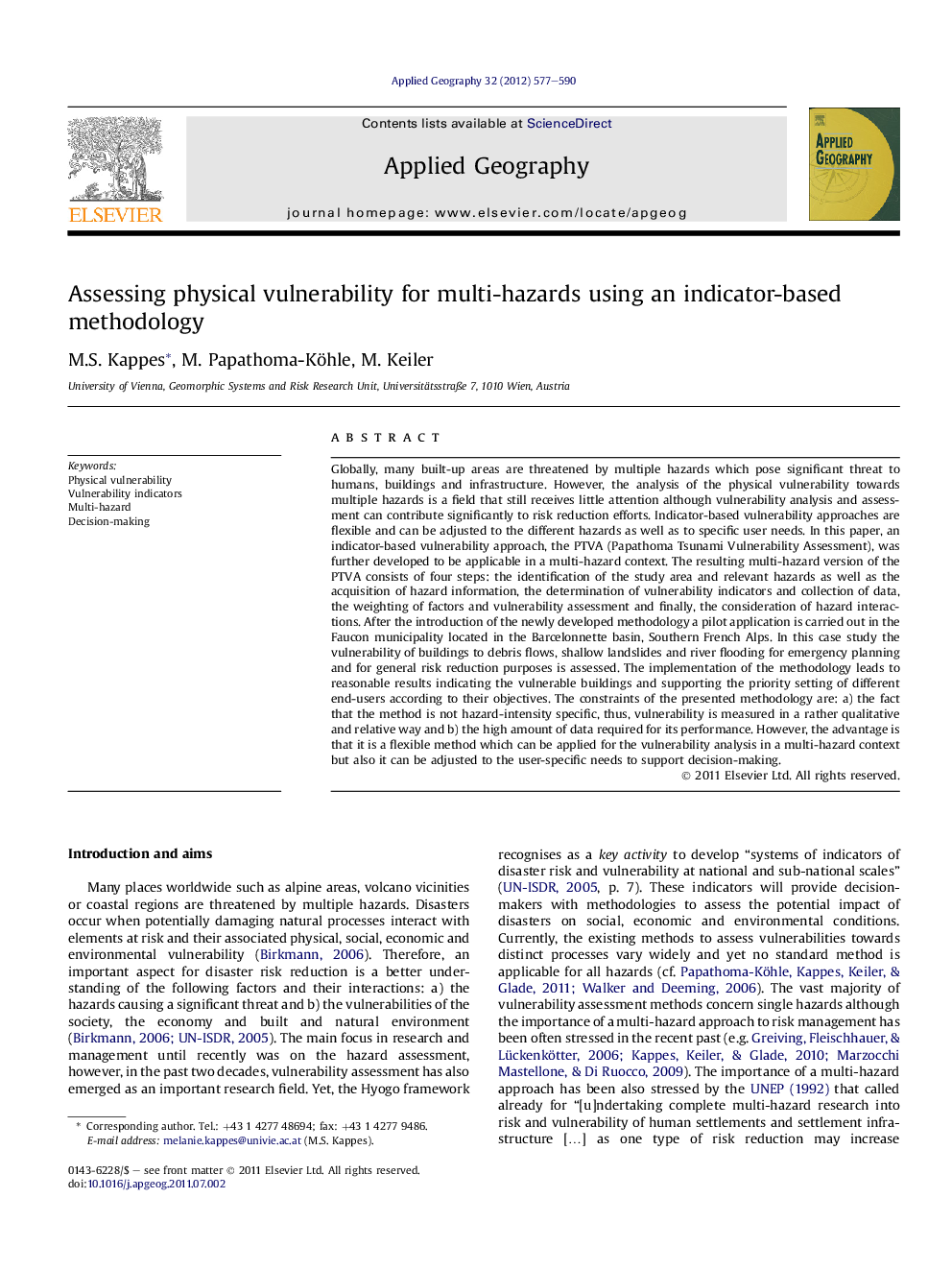| کد مقاله | کد نشریه | سال انتشار | مقاله انگلیسی | نسخه تمام متن |
|---|---|---|---|---|
| 83581 | 158727 | 2012 | 14 صفحه PDF | دانلود رایگان |

Globally, many built-up areas are threatened by multiple hazards which pose significant threat to humans, buildings and infrastructure. However, the analysis of the physical vulnerability towards multiple hazards is a field that still receives little attention although vulnerability analysis and assessment can contribute significantly to risk reduction efforts. Indicator-based vulnerability approaches are flexible and can be adjusted to the different hazards as well as to specific user needs. In this paper, an indicator-based vulnerability approach, the PTVA (Papathoma Tsunami Vulnerability Assessment), was further developed to be applicable in a multi-hazard context. The resulting multi-hazard version of the PTVA consists of four steps: the identification of the study area and relevant hazards as well as the acquisition of hazard information, the determination of vulnerability indicators and collection of data, the weighting of factors and vulnerability assessment and finally, the consideration of hazard interactions. After the introduction of the newly developed methodology a pilot application is carried out in the Faucon municipality located in the Barcelonnette basin, Southern French Alps. In this case study the vulnerability of buildings to debris flows, shallow landslides and river flooding for emergency planning and for general risk reduction purposes is assessed. The implementation of the methodology leads to reasonable results indicating the vulnerable buildings and supporting the priority setting of different end-users according to their objectives. The constraints of the presented methodology are: a) the fact that the method is not hazard-intensity specific, thus, vulnerability is measured in a rather qualitative and relative way and b) the high amount of data required for its performance. However, the advantage is that it is a flexible method which can be applied for the vulnerability analysis in a multi-hazard context but also it can be adjusted to the user-specific needs to support decision-making.
► Indicator-based approach to assess physical vulnerability of elements at risk.
► Vulnerability assessment methodology designed for multi-hazard.
► Promising and flexible method to support decision-making for different users and objectives.
Journal: Applied Geography - Volume 32, Issue 2, March 2012, Pages 577–590